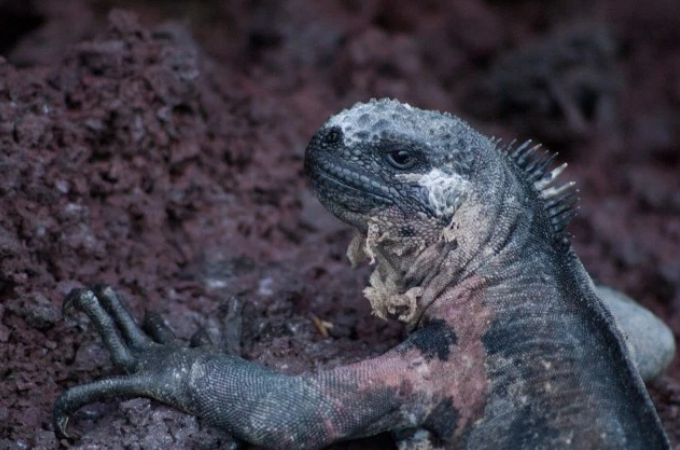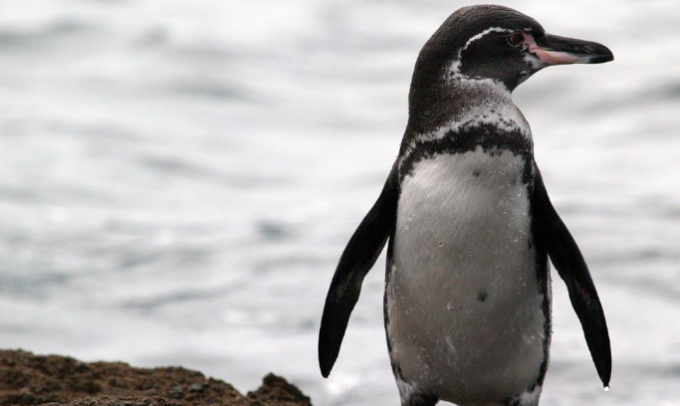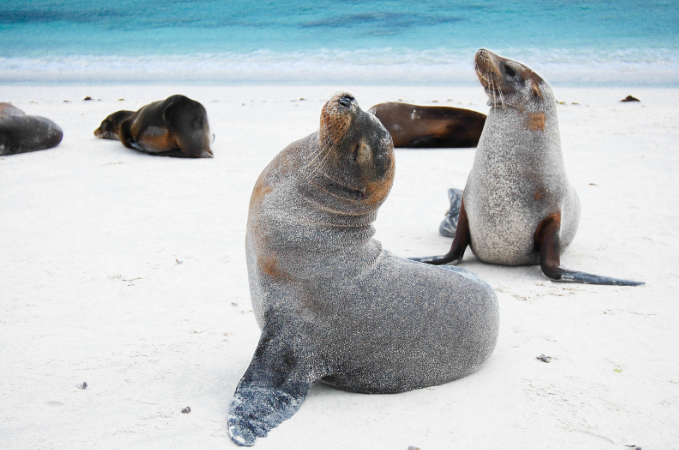Your itinerary is set, your bags are beckoning you to pack them, and your journey is so close you can hardly work through the coming days that sprawl between you and your adventure. You’ve seen the imagery, the videos, the documentaries. But what will you actually experience and see once you’re in the Galápagos Islands? What creatures can you expect to be up close and personal?
You are about to be blown away – The Galapagos Islands is one of the world’s foremost destinations for wildlife-viewing. Galapagos animals are not only very visible, they are some of the few on earth that have not developed an instinctive fear of man. You will literally walk through an otherworldly paradise, your closest neighbors including some of the world’s rarest and most unique creatures.
Here are just a few Galapagos animals that you can expect to see on either itinerary A or B:

Marine Iguana
Living on shorelines of black volcanic rock, and usually observed lounging and soaking up the sun, the marine iguana can be found distributed throughout the Galapagos Islands. Mostly black, there are some variations in color – the Espanola race is redder, the Santiago greener. Exclusive to the Galapagos, the marine iguana has evolved to do something no other modern lizard in the world can: forage by sea. Watch for marine iguanas on rocky shorelines, alternating between diving for a meal and basking in the sun to preserve body temperature.

Giant Galapagos Tortoise
Popularized by both media and fiction, the Giant Galapagos Tortoise may well be the most famous endangered species in the Galapagos, and perhaps the world. Lonesome George, a tortoise who inhabited the Island of Pinta, became a conservation icon, forever remembered by both conservation enthusiasts and laypersons alike. Once dwindled to 15 animals on the Island of Espanola, the population has recovered to multiple islands, including Santa Cruz, San Cristobal, Isabela, and Floreana.
You can also see them up close and personal at the Charles Darwin Research Station. There, you will find a wealth of information on their history and conservation efforts – even view incubators, individual animals and more.
 Image credit World Wildlife Fund
Image credit World Wildlife Fund
Galapagos Penguin
Found primarily on the Island of Fernandina and the west coast of Isabela Island, with small populations scattered across the archipelago, the Galapagos penguin can be seen cooling off in the Cromwell Current by day and resting on land by night. They breed mainly in caves and crevices of old lava flow and in burrows along the shore. Since Isabela Island’s northern tip crosses the equator, it is the only penguin species to inhabit the northern hemisphere.
This species is endangered, with an estimated population of 1,500 as of 2004. They are recovering slowly, after an alarming 70% decline in the 1980s. They are considered one of the smaller species of penguin, and are distinguished by a relatively large bill and a narrow white line around the face.
 Image credit AnimalCorner.com
Image credit AnimalCorner.com
Blue Footed Booby
The blue footed booby bird is native to the subtropical and tropical regions of the Pacific Ocean. Males and females are virtually identical, but the female is slightly larger and has larger pupils. The neck and head are light brown with white streaks, and the underside is bright white. The eyes are positioned on either side of the head toward the front, enabling excellent binocular vision. About thirty-two inches long, its wingspan is approximately five feet.
Only coming to land to breed, you can observe their mating rituals most commonly from May through July. Females are attracted to males with the bluest feet – taking part in impressive rituals as the males dance and show off their feet with a high-stepping strut. You might find their nests on the grassy ground, with 2-3 pale blue or green eggs. Both males and females protect the eggs and keep them warm.
 Image credit Adobe Stock
Image credit Adobe Stock
Sea Lions
Similar in appearance to California Sea Lions, sea lions in Galapagos are smaller and vary slightly in behavior and skull morphology. Considered an endangered species, the number of Galapagos Sea Lions is estimated between 9,200 and 10,600, a 50% decrease from a 1978 survey. They can be found throughout the Galapagos Archipelago, and have one established colony on Isla De La Plata in mainland Ecuador, just offshore. They are non-migratory, and generally unafraid of humans. They can be spotted diving along the rocky shoreline; finding shade under vegetation, in tide pools, or under cliffs; and resting at sea with one or both flippers in the air.
Breeding takes place between May and January; because of this extended breeding season, dependent pups can be seen in the colonies year-round.
Are You Ready?
A treasure trove of endemic species, the Islands are home to a vast array of unique Galapagos animals by air, land, and sea. These are just a few of the amazing creatures that you are very likely to see when you explore this last untouched land. Whether you feel overwhelmed by the possibilities or are a seasoned enthusiast, Ecoventura’s naturalist guides are a key element to your experience. They are skilled at identifying unique wildlife, as well as explaining the the Galapagos’ pristine ecosystem and conservation efforts.
Join us, and rest assured that you are in for the adventure of a lifetime. In the meantime, close your eyes and envision yourself in a land of evolutionary intrigue.




